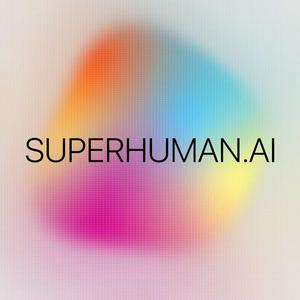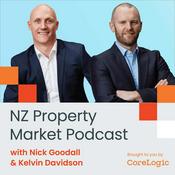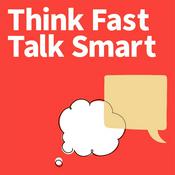Available Episodes
5 of 52
- The Easiest Way to Build Your Mobile App in Minutes? | Vishal Virani | Rocket.NewWhat if a single sentence could generate a full production-grade app—front end, backend, database, dashboards, payments, mobile, and even e-commerce? In this episode, Vishal Virani, CEO of Rocket, shows us how their “vibe coding” platform is redefining software creation. This is the most complete, end-to-end demo we’ve seen: from one-shot app generation, to fully native Flutter mobile apps, to PayPal-powered storefronts, to slash-command precision edits, to automatic API integrations using Postman.Check out Rocket here: https://www.rocket.new/?utm_source=youtube&utm_medium=superhuman&utm_campaign=podcasttutorialWe dive into:- How Rocket turns a single sentence into full production-grade apps- One-shot app generation and why prompts no longer need 40+ messages- Building real dashboards, internal tools, and enterprise apps automatically- Native mobile apps with Flutter generated in minutes- PayPal storefronts with inventory, payments, analytics, and dynamic product creation- Slash-command precision mode for reliable UI, API, and color/theme changes- Superbase authentication, email alerts, multilang, and dynamic asset generation- Automatic API integration with Postman—no hallucinations, no manual wiring- How Rocket thinks about “vibe coding” vs true production solutions- A preview of Rocket’s upcoming autonomous research engine: from idea → competitive analysis → what to build nextIf you want to see how AI is collapsing the entire software development stack—from concept to fully functional product—this is one of the most advanced demonstrations to date.Subscribe for deep conversations on AI, agents, and the future of intelligence.--------36:51
- This App makes Viral TikToks in Minutes - Tibo MakerWhat if you could generate viral TikTok and Instagram content every single day—without filming, editing, or even opening the apps? In this episode of the Superhuman AI Podcast, we sit down with Tibo Maker, founder of Revid, to explore the AI engine that can turn any creator into a full-time content machine.Tibo walks through how Revid creates dozens or even hundreds of short-form videos automatically using your avatar, your voice, and trending content pulled from X. From scraping high-performing posts to building talking-head clips and auto-publishing them to TikTok, Reels, and YouTube Shorts—Revid handles the entire process end-to-end.We dive into:- How Revid creates viral short-form videos from a single idea or tweet- Generating dozens of videos automatically using your avatar or voice- Auto-publishing to TikTok, Instagram, and YouTube Shorts every day- Why this format consistently hits hundreds of thousands of views- How creators are scaling content output to “infinite” with AI- When manual editing still matters—and when to let AI take over- Why Tibo believes AI will redefine the entire creator workflowIf you’re a creator, founder, or operator looking to scale your social presence without burning out, this episode shows how AI can turn you into a content engine overnight.Subscribe for deep conversations on AI, agents, and the future of intelligence.--------5:29
- Tech CEO: AI Is Not As Smart As You Think! - Ashfaq MunshiToday’s AI can write code, pass exams, and generate images, but it still doesn’t know how to learn. In this episode of the Superhuman AI Podcast, we sit down with Ashfaq Munshi, CEO of Pepperdata and former CTO of Yahoo, to unpack what he calls the real problem with AI: models don’t build world models, don’t learn from experience, and don’t improve the way a child does.Ashfaq walks through the missing pieces in today’s LLMs, why world models and true learning will define the next decade, and how deep infrastructure from chips to Kubernetes to GPUs to power grid underpins every “AI breakthrough” headline you see. He also breaks down how Pepperdata squeezes 20-30% more efficiency out of massive GPU and Kubernetes clusters for some of the world’s biggest companies.We dive into:- Why Ashfaq believes today’s AI models “don’t know how to learn”- World models, robotics, and what real learning would look like- The hidden infrastructure stack that makes modern AI possible- How Pepperdata optimizes GPUs and Kubernetes to save real money- Data centers, power, cooling, and the coming energy crunch- US vs China in AI: talent, chips, research, and long-term advantage- Career advice for builders who want to work on decade-long problemsIf you care about where AI goes after the current hype cycle down at the metal and up at the level of real intelligence this conversation with Ashfaq cuts straight to the core issues.Subscribe for deep conversations on AI, agents, and the future of intelligence.--------1:15:52
- This AI Does Everything — Flo Crivello, CEO of LindyWhat if an AI could run your entire workflow—email, calendar, meetings, research, scheduling, follow-ups, even ordering food—without you lifting a finger? In this episode of the Superhuman AI Podcast, we sit down with Flo Crivello, CEO of Lindy, to explore the most capable AI assistant we’ve seen yet: an agent that actually does the work for you.Flo shows real agents operating autonomously: logging into websites, replying to emails, preparing meeting briefs, joining calls, taking notes, updating docs, and coordinating across apps—acting with judgment, memory, and initiative. This isn’t automation. It’s real, goal-driven intelligence.We dive into:- How Lindy agents plan, reason, and take action on real computers- Email + calendar agents that handle your entire schedule end-to-end- Research agents that prep meeting dossiers automatically each morning- Live browser-control agents completing complex tasks without instructions- How AI agents collaborate with each other across your workflow- Why most customer support should be fully automated in 2025- The future of human work when AI handles the admin burdenIf you’re a founder, operator, or builder searching for the real future of AI agents, this episode shows what’s possible today—and what’s coming next.Subscribe for deep conversations on AI, agents, and the future of intelligence.--------16:56
- The Big Data Arms Race in AI — Inside ClickHouse with CEO Aaron KatzBig data and AI are now in an arms race—and the databases behind them are becoming some of the most important infrastructure on the planet.In this episode of the Superhuman AI Podcast, we sit down with **Aaron Katz**, CEO and co-founder of **ClickHouse**, to unpack how a high-performance open-source database became core to AI-native companies like OpenAI, Anthropic, Tesla, LangChain, and more. From a billion events per second to millisecond queries, Aaron explains what it actually takes to power AI-scale analytics in the real world.We dive into:- How ClickHouse became core infrastructure for OpenAI, Anthropic, Tesla and other AI leaders- Why big data and AI are now in an arms race- What “a billion events per second” really means in practice- Why databases matter more, not less, in an AI and AGI world- How ClickHouse thinks about open source, cloud, and its competitive moat- The shift from BI dashboards to AI agents querying live company data- Lessons from Salesforce, Elastic, and building ClickHouse into a data rocket shipIf you care about the future of AI infrastructure, observability, or analytics at serious scale, this conversation with Aaron cuts through the noise.Subscribe for deep conversations on AI, agents, and the future of intelligence.--------43:47
More Business podcasts
Trending Business podcasts
About Superhuman AI: Decoding the Future
AI is exploding. Every day, new intelligent tools are emerging, and they're becoming more powerful, more helpful, and more convenient to use than ever before. Artificial intelligence isn't just a handy tool for those in IT — the data science and application of AI tools spans across sectors. But how do you keep up with the latest developments? How do you make sure you don't fall behind in deep learning and automation? And where can you learn how to use these tools for productivity?
This is Superhuman AI: Decoding the Future - your source for the latest news and insights in artificial intelligence, brought to you by Zain Kahn (Superhuman.ai) and Hassan Bhatti (technology entrepreneur and investor). Each week, listen in as Zain and Hassan speak to AI industry pioneers and innovators to find out how smart technologies are transforming business and how you can apply these tools to enhance your productivity.
Along with interviews with some special guests, tune in for our weekly AI news show where we keep you in the loop with all the biggest stories and developments on AI ethics, AI marketing, and more. So, join Zain and Hassan as they break down machine learning, neural networks, and smart technologies to give you the tips you need to harness automation, boost your productivity, and let the AI tech do the heavy lifting for you.
Listen in on Superhuman AI: Decoding the Future and equip yourself with the knowledge to stay ahead in the AI era. Subscribe now and never miss an episode.
For more information, visit www.superhuman.ai.
Podcast websiteListen to Superhuman AI: Decoding the Future, The Property Academy Podcast and many other podcasts from around the world with the radio.net app

Get the free radio.net app
- Stations and podcasts to bookmark
- Stream via Wi-Fi or Bluetooth
- Supports Carplay & Android Auto
- Many other app features
Get the free radio.net app
- Stations and podcasts to bookmark
- Stream via Wi-Fi or Bluetooth
- Supports Carplay & Android Auto
- Many other app features


Superhuman AI: Decoding the Future
Scan code,
download the app,
start listening.
download the app,
start listening.






































